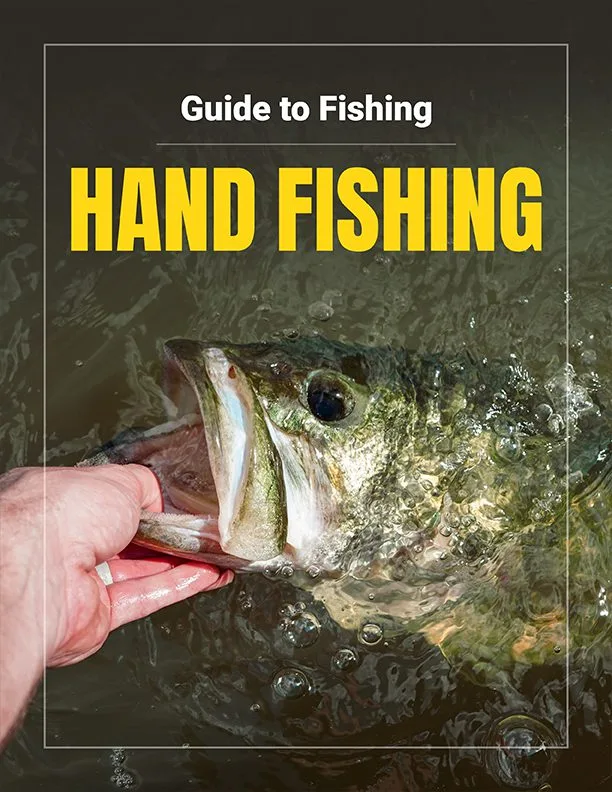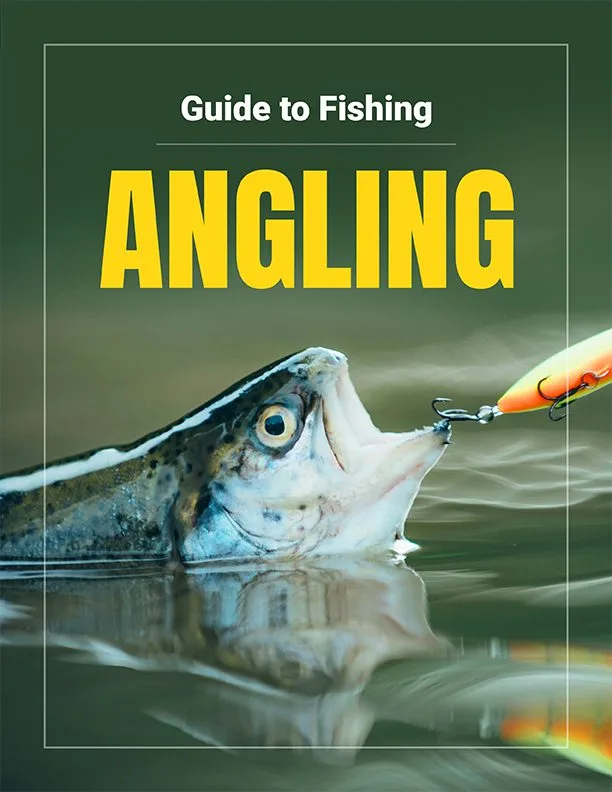Your Free Guide to Fishing: Spearfishing
Your Free Guide to Fishing: Spearfishing
We are privately owned and not affiliated with the government in any way or form.

Introduction to Spearfishing
Sometimes, fishing with the old rod, reel, and hook just doesn’t cut it. After all, it’s a game of patience. A long game of patience. Between waiting for the fish to bite and the possibility of leaving without a fresh catch, it can be a bit lacking in the excitement department.
If you enjoy exploring the water and catching fish, but want to make it more exciting than angling, then spearfishing may be the right activity for you. Forget the boring rod and reel – get your hands dirty using an authentic fishing spear.
There are several types of spears for fishing purposes, each one getting you up close and personal with your targets. Many fishermen agree that spearing a fish is one of the most heart-thumping ways to catch them.
Spearfishing is one of the oldest kinds of fishing, dating all the way back to prehistoric times. The excitement of hunting and the joy of swimming combine to create an amazing fishing trip experience in spearfishing.
However, spearfishing can be a difficult activity to get into. Figuring out which kind of spearfishing you want to try can be complicated. Not to mention gathering all the right gear, which can take lots of time and cost a lot of money if you don’t know what you’re doing. And, like with any sport that involves the use of weapons, getting used to your gear poses a slight risk to the beginner fisherman.
Once you have all your gear, you’ll be ready to choose a spearfishing location. Some states and countries have stringent policies about when and where you can go spearfishing, so it is important to do your research to avoid getting into trouble with local authorities.
The good news is that there are plenty of resources available to help you. To get started, conduct some research into the various types of spearfishing so that you have an idea of which version fits your tastes. You can also look for the most highly-recommended products and prices before you start shopping for spearfishing gear.
With some helpful advice, tips, and resources found in this guide, you can learn more about spearfishing and feel better prepared to start your journey toward becoming an experienced spearo in no time.
Types of Spearfishing
Spearfishing is a broad term that encompasses several different types of fishing. Each type shares a similar tool – the spear – although it is used in a variety of ways. It’s important to understand all the spearfishing techniques before you begin, so that you can choose the type that best suits you.
Shallow Water Spearfishing
There are two types of spearfishing that can be done from the shallowest part of the water: gigging and shore diving. Learn more about each method below.
Gigging
Gigging is one of the oldest forms of spearfishing. It involves standing on the shoreline with a handheld spear and jabbing or throwing the spear into the water when a fish swims by. Gigging is most commonly used to catch freshwater suckers and saltwater flounder, although it can also be used to hunt frogs.
Gear Used
- Gigging spears: These have a unique design made up of three or more prongs (also known as tines), similar to tridents. It also features a long pole, usually between 8 and 14 feet long.
- A flashlight: This is used to illuminate the water.
How to Gig
The steps below outline the most common method of gigging. Keep in mind that instructions may vary depending on location, equipment and fisherman:
- Stand on the shore near shallow water.
- Shine the light down on the water and look for a flounder or sucker. It will usually be covered by sand, but you should be able to see its outline. The light may also allow you to see the reflection of its eyes, giving you a good idea of its location.
- When you spot one, quickly spear it with the gigging spear.
- Since the surface of the water changes your perception and makes fish appear to be closer than they really are, you must angle your spear as you throw it into the water, usually aiming just below the fish. For flounder and other fish that rest on the bottom, you will want to hold onto the gigging spear as you jab.
Shore Diving
This technique is arguably the most practiced spearfishing activity around the world. Shore divers enter the water from beaches, reefs, or cliff and swim about 15 to 30 feet below the surface.
Shore diving is most commonly used to catch rockfish, kelp fish and ocean fish. Since this technique involves going underwater, it is vital that you have a diving partner with you to help if you have an accident.
Gear Used
- Wetsuit: A wetsuit is recommended in colder waters, but is not necessary if it is warm.
- Booties: These are neoprene socks that prevent the fins from rubbing your feet raw.
- Snorkeling gear: This includes a mask, snorkel and fins. Choose a simple snorkel, as those with purge valves tend to make a lot of noise and frighten the fish. Fins should be durable.
- Diving knife: You may need to cut fishing lines or tangled knots.
- Buoy or float: Choose a rigid float (rather than inflatable) so it can stand up to any nearby rocks. The float should be large enough that it can support your weight if you end up getting a cramp or getting tired. It should also be highly visible.
- Floatline: This is a rope that is attached to the float and to you. Many spearos also attach it to their speargun so it doesn’t get lost.
- Pole spear/speargun: You can use a handheld spear or speargun to hunt fish while shore diving. If using a speargun, choose a size between 900 and 1200mm.
- Speed spike fish stringer and/or catch bag: These are different types of tools used to carry your fish. A catch bag will allow you to store lobsters, while the fish stringer can be used for multiple fish. These should be attached to your float with monofilament, not to you; you don’t want to be a target for sharks.
How to Shore Dive
The steps below outline the most common method of shore diving. Keep in mind that instructions may vary depending on location, equipment and fisherman:
- Look for an area with good visibility, little ocean swell and little to no boat traffic.
- Find an accessible area for your entry point and identify an exit point. This may be the same as the entry point, but it may not if the tide or wind changes.
- Swim or paddle on the float to your desired location.
- Duck dive under the water and scan for your target fish. Often, they will be within 15 feet of the surface. The snorkel should not be in your mouth while you are underwater. Remember, you will be holding your breath the whole time.
- When you see a fish you want to catch, aim and spear it.
- When using a pole spear, grab the elastic loop with your dominant hand and loop it around your thumb. Slide your dominant hand up the pole to tighten the elastic. Keeping your arm extended, raise it to eye level to aim.. Rotate your arm toward your body to lock it. When ready to shoot, release your four fingers, holding onto the elastic with your thumb.
- With a speargun, you will load it by pulling back on the elastic and securing it. When you see a fish you want to catch, pull the trigger.
- Pull the excess string in by hand to get to the fish.
- Using your dive knife, make a gash in the fish just below the gills to kill it. Impale the fish on the stringer through its mouth and the gash you have made. Attach the other end of the fish stringer to your float.
- Repeat as desired.
Freedive Spearfishing
Freedive spearfishing involves a lot of breath-holding and deep diving below the surface of the water. You won’t have an oxygen tank with you, so you may need to practice holding your breath for longer periods.
Freedive spearfishing also means diving deeper than you would with shore diving, though you can enter the water from shore if you find an area with a deep drop-off.
Gear Used
- Wetsuit: A wetsuit is recommended in colder waters, but is not necessary where it is warm.
- Booties: These are neoprene socks that prevent the fins from rubbing your feet raw.
- Snorkeling gear: This includes a mask, snorkel and fins. Choose a simple snorkel, as those with purge valves tend to make a lot of noise and frighten the fish. Fins should be durable and longer than regular fins to give you more propulsion.
- Diving knife: The sheath for your knife should be attached to you via a clip on your wetsuit or belt.
- Dive computer: This shows you how deep you are and how long you have been under.
- Weight belt: This nylon belt goes around your waist and has lead weights strung onto it to keep you down. You should have enough to help you dive, but you should still be able to be buoyant at depths of 15 feet or less.
- Buoy or float: Choose a rigid or inflatable float (rigid if you are near surface rocks). The float should be large enough that it can support your weight if you end up getting a cramp or getting tired. It should also be highly visible.
- Floatline: This is a rope that is attached to the float and to you. Many spearos also attach it to their speargun so it doesn’t get lost.
- Speargun: You can use a regular speargun or a reel speargun to hunt fish while shore diving. Reel guns provide a further reach and allow you to catch larger fish.
- Speed spike fish stringer: This is how you will carry your fish until you get on the boat or shore. It should be attached to your float with monofilament.
How to Freedive
The steps below outline the most common method of freediving. Keep in mind that instructions may vary depending on location, equipment and fisherman:
- Look for an area with good visibility, little swell, and little to no boat traffic.
- If freediving from shore, find an accessible area for your entry point and identify an exit point. This may be the same as the entry point, but it may not if the tide or wind changes.
- Swim or paddle on the float to your desired location.
- Take a deep breath and dive under the water. If there are rocks, you can use handholds on them to bring you deeper. Scan for your target fish. Remember, you will be holding your breath the whole time.
- Make sure you are as quiet and slow as possible so you don’t scare away the fish. Also, the more you move, the more energy you will expend and the less time you will have underwater.
- When you see a fish you want to catch, aim and spear it. Load the speargun by pulling back on the elastic, then pull the trigger. If using a reel gun, release the line when you’ve speared a large fish to let it tire itself out, keeping a thumb on the reel so it doesn’t go out too much.
- Pull the excess string in by hand to get to the fish. With a reel gun, wind the string up with the reel only after the fish has stopped fighting.
- Using your dive knife, make a gash in the fish just below the gills to kill it. Impale the fish on the stringer through its mouth and the gash you have made. Attach the other end of the fish stringer to your float.
- Repeat as desired.
Boat Diving
Boat diving is another way to practice spearfishing. Like the name suggests, it requires access to a boat. You can use any kind of boat, like a kayak, canoe, sailboat, or motorized vessel.
This method involves sailing toward reefs, peninsulas, or even man-made structures like oil rigs. Once you reach the desired area, put on your wetsuit and all other diving equipment and start swimming.
As you search the structure, keep an eye out for fish. You can use a speargun or handheld spear for this activity, and will typically want to carry much of the same gear you would carry if you were shore diving.
Depending on where you choose to go boat diving, you may be allowed to use scuba diving gear. However, many states and countries have banned this practice. You may want to read up on the local rules and regulations for boat diving before you reach your destination.
Scuba Diving Spearfishing
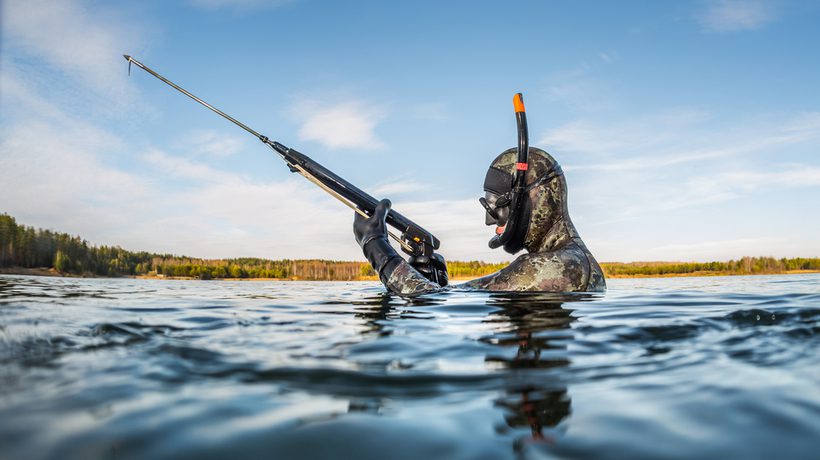
Scuba diving spearfishing is very similar to freediving, except that you can wear scuba gear. This lets you stay underwater for longer periods without having to worry about coming up to the surface for air. In order to go scuba diving, you must be trained and certified in the activity.
Gear Used
- Wetsuit: A wetsuit is recommended in colder waters, but is not necessary where it is warm.
- Booties: These are neoprene socks that prevent the fins from rubbing your feet raw.
- Scuba gear: This includes an oxygen tank, regulator, buoyancy control device, black-skirted scuba mask, and fins.
- Diving knife: The sheath for your knife should be attached to you via a clip on your wetsuit or belt.
- Weight belt: This nylon belt goes around your waist and has lead weights strung onto it to keep you below the surface. You should have enough weight to help you dive, but still be able to float at the surface after exhaling.
- Buoy or float: Choose a rigid (if you are near surface rocks) or inflatable float. The float should be highly visible to boats and other watercraft.
- Dive flag: This is tied onto the boat to alert other boaters in the area to steer clear.
- Dive computer: This shows you how deep you are and how long you have been under.
- Floatline: This is a rope that is attached to the float and to you. Many spearos also attach it to their speargun so it doesn’t get lost.
- Speargun: You can use a regular speargun or a reel speargun, which provide a further reach.
- Speed spike fish stringer: This is how you will carry your fish until you get on the boat or shore. It should be attached to your float with monofilament.
How to Scuba Dive Spearfish
The steps below outline the most common method of scuba dive spearfishing. Keep in mind that instructions may vary depending on location, equipment and fisherman:
- Look for an area with good visibility, little swell and little to no boat traffic.
- Pilot your boat to the area where you want to spearfish.
- Enter the water and swim to your desired location, making sure to use a float and a dive flag.
- Dive under the water. If you are going inside a structure such as a sunken ship, identify several exit points and scan for your target fish.
- Make sure you are as quiet and slow as possible so you don’t scare away the fish. Also, the more you move, the more oxygen you will need and the less time you will have underwater.
- When you see a fish you want to catch, aim and spear it. Load the speargun by pulling back on the elastic, then pull the trigger. If using a reel gun, release the line when you’ve speared a large fish to let it tire itself out, keeping a thumb on the reel so it doesn’t go out too much.
- Pull the excess string in by hand to get to the fish. With a reel gun, wind the string up with the reel only after the fish has stopped fighting.
- Using your dive knife, make a gash in the fish just below the gills to kill it. Impale the fish on the stringer through its mouth and the gash you have made. Attach the other end of the fish stringer to your float.
- Repeat as desired.
Blue Water Hunting
Blue water hunting is a magnet for adrenaline junkies. This technique is considered to be the hardcore version of spearfishing, one which requires the most patience and stamina.
The idea is to catch big fish that live in the deepest parts of the ocean, such as:
- Albacore
- Amberjack
- Almaco Jack
- Swordfish
- Cobia
- Mahi mahi
- Marlin
- Mackerel
- Sailfish
- Trevally
- Tuna
- Wahoo
- Yellowtail
Sharks are a danger in these areas since they feed on many of these species. Blue water hunting is done without the use of scuba gear and often without the help of landmarks or navigational aids. It is always best to exercise caution when going on a blue water hunting trip.
Gear Used
- Wetsuit: A wetsuit is needed since you will be out in the ocean.
- Booties: These are neoprene socks that prevent the fins from rubbing your feet raw.
- Snorkeling gear: This includes a mask, snorkel and fins. Choose a simple snorkel, as those with purge valves tend to make a lot of noise and frighten the fish. Fins should be durable and longer than regular fins to give you more propulsion.
- Diving knife: The sheath for your knife should be attached to you via a clip on your wetsuit or belt.
- Weight belt: This nylon belt goes around your waist and has lead weights strung onto it to keep you down. You should have enough to help you dive, but you should still be able to be buoyant at depths of 15 feet and less.
- Pressurized float: The float should be highly visible and pressurized to 3atm absolute.
- Dive computer: This shows you how deep you are and how long you have been under.
- Dive flag: This is tied onto the boat to alert other boaters in the area to steer clear.
- Floatline: This is a rope that is attached to the float and to you. Many spearos also attach it to their speargun so it doesn’t get lost.
- Speargun: Bluewater spearguns are much heavier duty than other spearguns. They can reach a whopping 72 inches long and contain a far more powerful cable (up to 750 pounds). You should also have a second speargun with a reel.
How to Go Blue Water Hunting
The steps below outline the most common method of blue water hunting. Keep in mind that instructions may vary depending on location, equipment and fisherman:
- Sail your boat out into an area with deep, open water.
- Attract fish either by trolling (setting out lures to trail behind the boat) or chumming (throwing bait, anything from ground-up fish to breakfast cereal, off the side of the boat).
- Put on your wetsuit and dive into the water, constantly looking out for fish. Be sure to always keep an eye on your boat. Since you’re spearfishing without any landmarks around you, you may lose your sense of direction if you swim too long. You’ll likely be looking for larger fish in these waters, so it’s especially important to have a partner who can help you subdue larger catches.
- Shoot the fish with the speargun.
- Grab the float line and equalize the pressure as needed.
- As the fish tires, pull it up with the line from your speargun. Sometimes, a fish will get a second wind once it reaches a pressure change, so that is when you can shoot it with the second gun.
- Have your partner assist you in getting the fish into the boat.
Spearfishing Safety Precautions
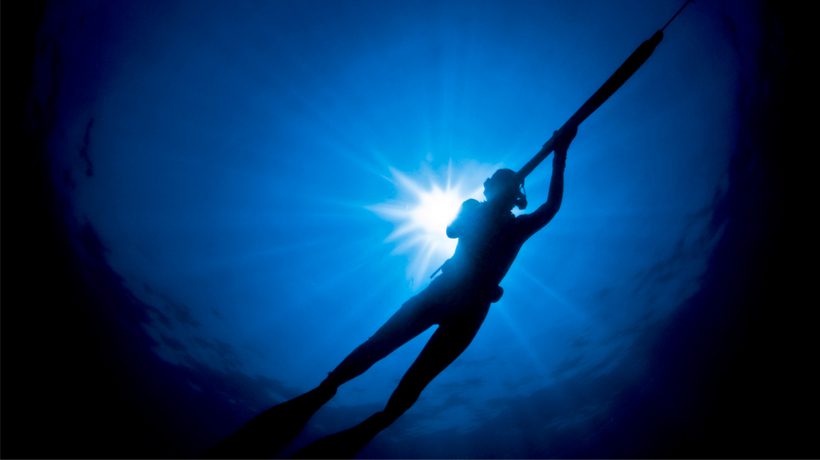
Before you head out on your spearfishing journey, you may want to assess your skills and abilities to ensure you are practicing the sport in the safest way. It may be helpful to keep the following safety tips in mind:
- Find a fishing partner to go with you.
- If you are going solo, make sure to tell someone your location and when you expect to return.
- If you do not know the name of the location where you are going spearfishing, send a pin from your phone to another person or find the GPS coordinates.
- Do not load or shoot your speargun out of the water.
- Unload your speargun before getting out of the water.
- Put the safety on before loading your speargun.
- When loading your speargun, brace it against your chest and point the tip as far away from you as possible.
- Never point your speargun at another person, even if the safety is on.
- When shooting a speargun, hold it tightly and be prepared for recoil.
- Look at what you are shooting. If you hit a rock, the shaft may bounce back at you.
- Do not shoot in the direction of another diver or spearfisher.
- If you see a shark, be vigilant.
- If you are being circled by a shark, stay cool and maintain eye contact with it. Do not panic or flail.
- If you are being repeatedly bothered by a shark, even a small one, get out of the water. Most shark attacks happen with smaller sharks between five and eight feet.
- Get your catch out of the water as soon as possible if you see a shark.
- Avoid diving when there is poor visibility, such as at dawn or dusk.
- If you have been scuba diving, avoid freediving right after. Ambient nitrogen in your blood can get recompressed, resulting in decompression sickness. Wait at least 12 hours.
- Avoid shorediving when the surf is high.
- If caught in a rip current, swim parallel to the shore.
- When spearfishing off a boat, initially swim against the current so it will be easier to return when you are tired.
- Customize your float line to the depth of each dive so you don’t get tangled up in it.
- After you spear a fish, it is best to head toward the surface to fight it rather than fighting it at depth.
- Place your dive knife so that it is easily accessible from either hand in case you get tangled in the line and need to cut it.
- If you have speared a big fish and it is pulling you quickly, it is better to let go of the speargun than to let it drag you out to sea.
Shallow Water Blackout
One of the major dangers of spearfishing, especially when freediving, is shallow water blackout. This can occur when a diver’s lungs expand, sucking all of the oxygen out of the bloodstream and causing a loss of consciousness.
In extreme cases, shallow water blackout can lead to drowning. You may be able to avoid shallow water blackout with the following tips:
- Ensure that you are properly weighted and are positively buoyant at depths shallower than 15 ft. That way, if you black out, you increase the chances of bobbing to the surface.
- Give yourself enough time to slowly return to the surface so that you do not run out of oxygen or panic.
- If you are concerned that you have exceeded your bottom-time, release your weight belt buckle, holding the free end in your hand as you ascend.
- Breathe slowly once you reach the surface.
- Do not crane your neck to look at the surface as you are ascending.
- If you are with a diver who has blacked out, haul the diver out of the water and blow on his or her eyes.
- Get certified in CPR before your trip.
- If you have had a close call with shallow water blackout, visit a hospital once you get on land. If you have inhaled saltwater, the effects take some time to manifest, so you may need to be treated.
Tips for Getting the Right Spearfishing Gear
Spearfishing isn’t just physically demanding; it can be financially draining as well. Be sure to read about all the gear you’ll need to get into the sport before you plan your first trip. Once you understand all the equipment that you need to take with you, you can begin the exciting preparations for your adventure.
Buy Your Spears
A good quality handheld spear (such as one made by JBL or Scuba) often costs between $200 and $300. Certain lower-end models may only cost $40 to $50.
Spearguns are a bit more expensive. The price also varies depending on whether you get a pneumatic gun (which is a bit more complex) or a band gun. A solid speargun, like one made by JBL or Mares, can cost between $150 and $400.
Suit Up
You can wear casual clothing to go gigging, but other kinds of spearfishing often require a wetsuit. Good quality wetsuits, such as ones made by Cressi or SEAC, can cost as little as $150, but often cost closer to $275 or more.
In addition to a wetsuit, you may also need the following gear:
- Flippers – Popular brands like Mares or Omer cost up to $500
- A snorkeling mask – You may find them for $80 to $100 from brands like ScubaPro and Omer
- Diving gloves – Gloves from popular brands like Mares or ScubaPro can cost between $20 and $40
In total, scuba gear can cost between $500 and $1600 for a complete kit. If you are planning to scuba spearfish, you’ll also likely need to take a class and become certified in scuba diving.
Once you’ve acquired the gear that covers your immediate body, you’ll also want to consider the items you need to carry with you. This includes a diving knife (Cressi or Promate knives often cost between $30 and $60) for emergencies or when you have to cut something, such as seaweed tangled around your leg.
Most spearos also use a buoy to alert boats and anyone watching the water’s surface to their location. A decent hard buoy typically costs around $30, while a quality stringer costs around $15.
If you plan to go spearfishing in deeper waters, you’ll also want to have a weight belt (such as one made by Riffe or Cordura), which allows your body to sink lower into the water. The average weight belt costs about $30.
Depending on where you go spearfishing, you may also want a diving watch (such as one made by Suunto or Tusa, which usually cost anywhere from $600 to $1,000) and a flashlight (a Light & Motion or SeaLife flashlight costs $150 and higher).
Get a Good Boat
If you decide to commit to spearfishing from a boat instead of freediving, you’ll probably need to purchase one. Your best option may be to rent a boat or buy a used one when you’re just starting out. You’ll save yourself some money while you get used to your preferences. Once you become more familiar with the sport, you may be more inclined to buy one.
If you look online, you may be able to find a good quality kayak (such as a Hobie or Wilderness Systems product) for as little as $600. Otherwise, you’ll likely pay between $1,000 and $5,000 for a new kayak.
Motorized fishing boats tend to be very expensive. The average Mako or Nitro product costs between $20,00 and $60,000, although you may be able to snag a deal and get one for less.
How to Prepare for Spearfishing
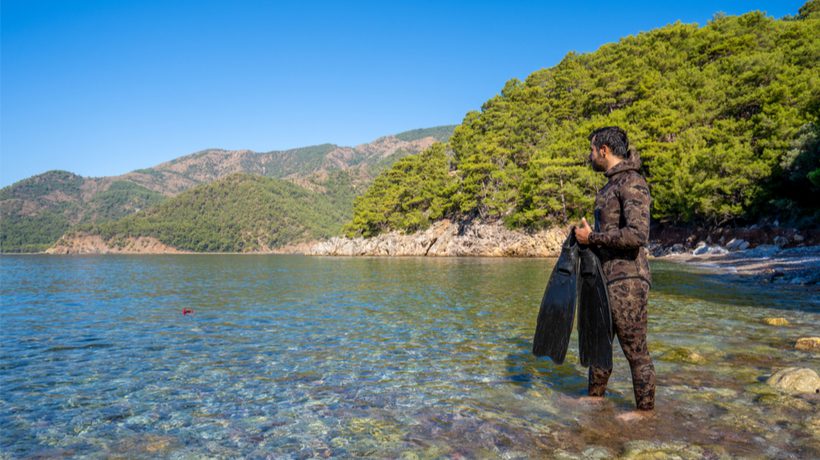
Once you have all the proper spearfishing gear, it’s time to start learning how to use it all. It’s also a great time to start planning your first fishing trip, nailing down the details surrounding the location, and determining the length of your first voyage.
Learn From the Experts
Like with any sport, your best resource is often those who have more experience and are willing to show you the ropes. Look for experienced spearos in your area, and try to meet with them on a regular basis.
It helps to try and learn whatever you can from experienced fishermen, like how to fix a speargun or choose the right kind of bait. If you can, tag along with them on a few fishing trips so you get to see them in action. Watching an expert can do wonders for your own technique.
A great way to meet other enthusiasts is to join local spearfishing or diving clubs. If you can’t find any in your immediate area, try applying for membership in one of the larger national spearfishing organizations.
Some of these larger spearfishing organizations include:
- The Underwater Society of America
- The International Underwater Spearfishing Organization
- CenCal Spearfishing
- The Rocky Mountain Spearfishing Association
In addition to joining organizations and associations, be sure to check out some online forums frequented by spearos around the world. They may be able to answer your questions about fishing techniques, local regulations and other matters.
Some of the major web forums currently in use include the following:
- Spearboard.com
- DeeperBlue.com
- SpearingForum.com
- The Fishing Website (fishing.net)
Decide Where You Want to Spearfish
Spearfishing has far more regulations than angling, which vary depending on the state or country. Some places allow you to use snorkeling gear or spearguns when you go spearfishing, while others do not. Furthermore, some places only allow spearfishing during specific seasons.
It helps to read up on the rules and regulations beforehand so you do not accidentally break the law. It’s also important to learn whether you’re required to get a certain kind of fishing license for your location.
Additionally, there are a few details you may need to consider based on the location you visit. For example, some places have weather conditions which require a thicker or lighter wetsuit.
Research Local Regulations
There are a variety of regulations and restrictions for spearfishing that vary by location. Before you leave for your fishing area, check the regulations and rules for the area.
Most local regulations deal with the kind of gear you can or cannot bring into the area. Similarly, many of these regulations change over time. As such, it’s important to familiarize yourself with all the local regulations, including the following details:
- If fishing licenses are required for that state
- The areas in which you can or cannot go spearfishing
- If you can use scuba or snorkeling gear
- The seasons in which you can go spearfishing
- Permitted species and sizes
Talk to Locals
Some places are better for spearfishing than others. It may help to ask the locals for the best places for spearfishing. If you are a beginner, consider joining a spearfishing charter or get a guide.
If you want to go on your own without the help of a guide, local fishing organizations and bait shops are good places to get more information about the best spots for spearfishing and what kinds of fish you can expect to find there.
Get Used to Your Gear
Spearfishing typically requires more equipment than angling or other fishing techniques. Not only that, but some pieces of equipment (such as your speargun) have complex parts which can break or malfunction if used incorrectly.
Take the time to go over your equipment and become extremely familiar with it. When you initially purchase your equipment, ask the employee in the shop how to care for each item so that it lasts and stays in good working order.
If you plan to use a weight belt, it may help you to practice attaching the weights beforehand. If you’re taking a speargun, learn the basic mechanics of it so you can fix it in an emergency. Also, practice assembling the points onto your spear.
If you can, find local pools or lakes where you can practice using your equipment in the water. If you’re planning to go spearfishing from a boat and haven’t bought one yet, rent or borrow one from a friend for a day or two.
Top 5 Spearfishing Locations in the U.S.
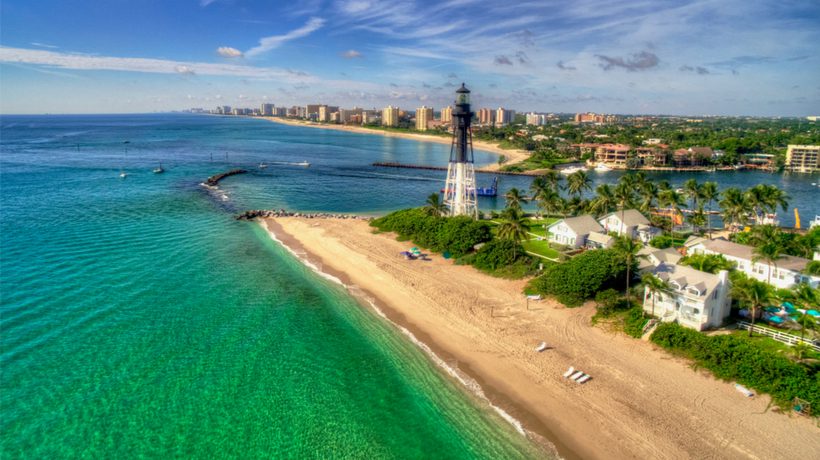
If you’re wondering about the best spearfishing spots, look no further than the United States. From coastal towns to inland areas, this country has a plethora of amazing watering holes where you can get your spearfishing kicks.
Pompano Beach, Florida
Located on the southeastern side of Florida, Pompano Beach has several great spots for boat diving. The area is primarily known for hogfish, but you can also find Florida lobster, snapper and some grouper species in these waters.
It’s important to learn about which species are restricted before you start fishing. Goliath groupers, for example, are protected under Florida law, so don’t aim to catch those.
If you want to expand to other beaches for different fish species, try Anglin Pier Reef in Lauderdale-by-the-Sea or Labonte Reef in Fort Lauderdale. Other nearby areas include Dania Beach and Hollywood Beach.
If you visit during the right season, you can also take part in some of Pompano Beach’s exciting annual events, such as:
- St. Coleman’s Italian Festival in February
- Pompano Beach & Lighthouse Point Boat Parade in December
- St. Patrick’s Festival in March
Pompano Beach also has plenty of great hotels in which you can stay, from luxurious options like the Lighthouse Cove Resort and the Sands Harbor Resort and Marina to more affordable options like the Seahorse Motel or the Forum.
If you’d like to add some camping to your trip, you can pitch a tent or park your RV at Oleta State Park or John Prince Campgrounds. For fancier RV accommodations, you may prefer Highland Woods RV Resort or Paradise Island RV Resort.
Don’t forget to add other fun activities to your schedule, like scuba diving on an exploration of local shipwrecks, visiting the Meridian Gallery, or dropping by the Ely Educational Museum. You can also see local landmarks such as the Sample-McDougald House or Butterfly World.
Charleston, South Carolina
Located on the southern shores of South Carolina, Charleston is well known for its gigging and boat diving opportunities. Grouper are the best-known fish species caught in the area, but you can also catch snapper, black sea bass, cobia, hogfish and lobster, a unique fishing experience praised by fishermen of all ages.
Experienced fishermen particularly recommend the areas around the sunken USCGC Comanche and the Charleston 60 Reef. Keep in mind before you come that some restrictions apply to certain fish. For example, you can’t go gigging for red drum or spotted seatrout from December through February.
If you come at the right time, you can also experience some of Charleston’s excellent annual events, such as the MOJA Arts Festival in late September to early October, the Lowcountry Oyster Festival in January or the Piccolo Spoleto Festival in June.
Lodging is easy and fun with several great hotels to choose from, like the Restoration Hotel, the Planters Inn, or Town & Country Inn and Suites. If you want to turn your spearfishing trip into a camping trip, set up a tent in James Island County Park, Oak Plantation Campground, or any one of the other locations.
You may also want to add some other activities to your trip. Consider stopping by Riley Waterfront Park, browsing Charleston City Market, or visiting the South Carolina Aquarium. If you like dipping into local culture, be sure to check out local landmarks such as the Fort Sumter National Monument, the Cathedral of St. John, and the iconic Rainbow Row.
Lake Michigan, Wisconsin
While its name may confuse you, the Wisconsin side of this Great Lake is the best spot for shore diving and boat diving. Carp is one of the most popular catches, but you can catch other rough fish species including white suckers, brown bullhead, and rock bass. There appears to be some debate among authorities about whether you can hunt panfish (such as perch or bluegills) in this area, so avoid shooting them if you want to be on the safe side.
Be sure to explore some other great Wisconsin spearfishing spots, like Lake Winnebago, Lake Wazee, or Lake Superior. According to local regulations, you can also use spearguns for ice fishing on Lake Superior and Lake Winnebago.
If you visit during the right season, you can experience a few great events in nearby Manitowoc, including the following:
- Winterfest in January
- Fishing Derbies in July
- Pumpkinfest in October
Manitowoc also has some great lodging options, with hotels such as Harbor Town Inn, Fox Hills Resort, and Econo Lodge. If you prefer to camp during your stay, check out the campgrounds at Point Beach State Forest or Scheffel’s Hideaway Campground.
Pack your itinerary with more fun activities, like surfing on Lake Michigan, playing mini golf at Citizen Park, or visiting Lincoln Park Zoo. Culture lovers will enjoy checking out local landmarks such as the Sputnik Crash Site or Pinecrest Historical Village.
Oahu, Hawaii
Oahu, one of Hawaii’s largest islands and home to the capital city of Honolulu, is a great place for boat diving and blue water hunting. Fishermen rave about the abundance of parrot fish, although you can also hunt goatfish, surgeonfish, snapper, some species of wrasses and reef fish. There are also some invasive species that authorities would love to eliminate, such as peacock grouper (although officials do not suggest eating these).
Experienced spearos recommend spearfishing around Kaena Point, Dillingham Airfield, and the community of Waialua. Come at the right time and you can also sample some of Oahu’s annual events, including the following:
- Honolulu Festival in March
- Triple Crown of Surfing in November and December
- Lei Day Celebration in May
Oahu also has plenty of lodging options, from affordable places like Ke Iki Beach Bungalows and Hotel Renew to luxurious places like Four Seasons Resort Oahu and Prince Waikiki. For camping, bring your RV or tent to Bellows Field Beach Park or Malaekahana Beach Campground & State Recreation Area.
If you want to try some other water activities, you can go surfing or snorkeling or just take a leisurely stroll along any of Oahu’s many beaches. For more urban pastimes, stop by Kapiolani Community College’s Farmers Market, attend a luau, or visit Iolani Palace. History enthusiasts, be sure to check out landmarks such as Pearl Harbor or the Statue of Duke Kahanamoku.
San Diego, California
San Diego is situated on the southwestern shore of California and is a great place for shore diving and boat diving. White sea bass are the most popular catches, but you can hunt for a variety of species, such as:
- Giant black sea bass
- Dorado
- Yellowtail
- Kelp bass
- California halibut
- Lobster
- Barracuda
Experienced spearos frequent certain areas around La Jolla Cove (check local regulations, as there are some strict rules), Mission Bay, and around other various islands and offshore reefs.
Plan your visit during some of the area’s annual events, such as the San Diego County Fair in June, the Dixieland Jazz Festival in November, or San Diego Restaurant Week in January.
San Diego has plenty of lodging, from luxurious options like the Sheraton San Diego Hotel & Marina or Pantai Inn to more affordable choices like the Humphreys Half Moon Inn or Sheraton La Jolla Hotel. Or, if you prefer camping, set up a tent or RV at locations such as Campland on the Bay or Carlsbad State Beach.
There are plenty of water activities that you can add to your schedule, including surfing, scuba diving, or snorkeling at any of San Diego’s excellent beaches. For more urban pastimes, check out a stage show at La Jolla Playhouse, catch a concert at the Open-Air Theater, or take a tour through the USS Midway Museum. For a heaping slice of San Diego’s history, be sure to see landmarks such as Whaley House Museum or Mt. Soledad National Veterans Memorial.
Top 5 International Spearfishing Locations

There’s a world of adventure that awaits just outside this country’s borders. While the U.S. has plenty of amazing spearfishing locations, don’t limit yourself to just one type of terrain. Expand your horizons and plan an international spearfishing trip.
Like the locations suggested for the U.S., this list will focus mainly on towns which have multiple spearfishing hot spots, although there are some distinct water bodies mentioned as well. Here’s a list of some of the best spearfishing locations outside the United States.
Gulf of Chiriquí, Panama
Located on the southwestern side of Panama, this area is one of the best places in the world for boat diving and blue water hunting. While yellowfin tuna are the best-known catch, you can also hunt for:
- Red snapper
- Parrot fish
- Dorados
- Barracuda
Experienced spearos recommend spearfishing around David, a local town where you can get charter boats to transport you to some of the best reefs and islands.
If you arrive at the right time and don’t mind some more traveling, you can enjoy many of Panama’s annual events, such as Feria del Mar in September, the Panama Jazz Festival in January or the Pollera Festival in July.
There’s plenty of lodging in the Gulf of Chiriquí, from luxurious options such as Bocas Del Mar and the Haven Hotel and Health Spa, to more affordable options such as Hotel Valle Verde or Hotel Sol Y Mar. Campers can put up a tent at one of the many campsites in the region, like the Chiriquí Gulf National Marine Park or various locations on Bolaños or Gamez Islands.
Make your trip a vacation by adding other activities to your schedule. For example, you can go snorkeling, scuba diving, or nature watching in the nearby Gulf of Chiriquí National Marine Park. There, you’ll find many exotic animals, including sea turtles, howler monkeys, and humpback whales. Head into the city to play a round of tennis or go horseback riding at Las Olas Resort. Also, don’t forget to see landmarks such as The Lost Waterfalls of Boquete.
Bali, Indonesia
Bali, one of the southernmost islands in Indonesia, is a great spot for shore diving, boat diving and blue water hunting. Most spearos enjoy catching dogtooth tuna, but you can also pull in a variety of other species. These include:
- Spanish mackerel
- Trevally
- Red bass
- Dorados
- Sailfish
- Snapper
Experienced fishers recommend hunting along Bali’s northern and eastern coasts, as well as off the western coast of the nearby island of Sumbawa.
Schedule your trip around some of Bali’s annual events such as the Bali Kite Festival from June to August, Nusa Dua Fiesta in October and November, or the Nyepi Eve in March. If you’re looking for luxury, Bali has it all. Stay in one of the luxurious accommodations such as Viceroy Bali or Seminyak Beach Resort and Spa. For more affordable places, check into the Kamil Villas or Tirta Sari Bungalows.
Since it is an island, there is a wide array of other water activities to add to your schedule. Go snorkeling, paddleboarding, or surfing at any of Bali’s great beaches or enjoy the water rides at Waterbom Park Bali or Circus Waterpark. For more urban activities, visit the Agung Rai Museum of Art, see a show at the Nusa Dua Theatre or attend a jewelry workshop in Celuk or Ubud. History buffs will enjoy visiting local landmarks such as Tanah Lot or Uluwater Temple.
Ascension Island, Saint Helena
A British territory located in the Atlantic Ocean, Ascension Island is a great spot for boat diving and blue water hunting. The most popular catches include the following species of fish:
- Marlin
- Yellowfin tuna
- Wahoo
- Dorados
- Sailfish
- Dogtooth snapper
- Grouper
Spearfishing can be done nearly everywhere across Ascension Island, since it is home to numerous species and has only a small human population.
Since Ascension Island is a small and isolated location, the only hotel is the Obsidian Hotel, which has various cottages and hotel rooms available. Local scout groups have been known to camp by Green Mountain and Devil’s Cauldron, so you may be able to set up a tent and camp during your stay. Be sure to ask local authorities about this before packing your tent gear.
If you want to fit in some other activities during your trip, go snorkeling or scuba diving at any of the shorelines or go swimming at Comfortless Cove or English Bay. For more land-based activities, go hiking along Rupert’s Path, check out the sea turtles at Long Beach, or explore the lava tunnels at Command Hill.
Just for laughs, play a round of golf at the course between Two Boats Village and Georgetown – it is said to be the world’s worst golf course. If you want to explore local culture, be sure to check out landmarks such as St. Mary’s Anglican Church, Fort Hayes or the Exiles Club building.
Cairns, Australia
Cairns is located on Australia’s northeastern side and is a great spot for boat diving and blue water hunting. Many fishermen come here for the black marlin, but you can also fish for the following species:
- Mackerel
- Dogtooth tuna
- Sailfish
- Coral trout
- Trevally
- Parrotfish
Experienced spearos frequent spots between Cairns and Cooktown, particularly in the Great Barrier Reef. If you want to try spearfishing in nearby areas, try Port Douglas and other Queensland locations.
Keep in mind that since Australia is in the southern hemisphere, the seasons are opposite to what you might be used to. Plan your visit so that you can enjoy annual events, such as Carols by Candlelight in December, the Cairns Indigenous Art Fair from June to July, or the Cairns Amateurs Carnival in September.
Cairns has plenty of lodging to choose from, from luxurious options such as the Park Regis City Quays and the Mantra Esplanade Cairns to more affordable options like the Pacific Hotel Cairns or the Coral Tree Inn. If you want to camp during your trip instead, pitch a tent at Cairns Holiday Park or Fitzroy Island. You can also rent an RV, and take it to Palm Cove Holiday Park or Babinda.
Pack your itinerary full of other fun activities, like visiting Cairns Botanic Gardens or the Tjapukai Aboriginal Cultural Park, hiking through Green Island National Park, or snorkeling over the Great Barrier Reef. For more urban activities, visit Rusty’s Market, see a show at Cairns Dinner Theater or view artwork at Doongal Aboriginal Art. If you want to explore local culture, be sure to check out landmarks such as St. Monica’s Cathedral or Freshwater Station.
Zanzibar, Tanzania
Part of an island on the western shore of Tanzania, Zanzibar is a great spot for boat diving or blue water hunting. Due to local regulations, you’ll have to use a charter (such as Extreme Blue Water Spearfishing) unless you’re a Tanzanian citizen.
While dogtooth tuna is the most sought-after catch, you can also fish for angelfish, black marlin, yellowfin tuna, wahoo, trevally, sailfish, barracuda and other fish species. Locals recommend spearfishing around Latham Island or Pemba Island.
If you’re lucky, your visit could fall during one of Tanzania’s exciting annual events, such as:
- Zanzibar Revolution Day in January
- Zanzibar International Film Festival in June
- Jahazi Literary and Jazz Festival from August through September
Zanzibar has various lodging options, from luxurious choices like Zanzibar Palace Hotel and Kholle House to more affordable options such as Princess Salme Inn or Beyt Al Salaam. While tent camping is illegal in Zanzibar, you can go for more rustic accommodations at places such as Baby Bush Lodge Zanzibar or Paradise Beach Bungalows.
While you are there, you may want to fit some other activities into your schedule. Swim at Nungwi or Kendwa beach, go snorkeling at Mnemba Atoll, see the giant turtles at Prison Island, or go nature watching in Jozani Forest. Head into the city to see some urban sights, like visiting Stone Town, browsing the Forodhani food market, or taking a tour through the Palace Museum and House of Wonders. If you want to explore local culture and history, be sure to check out landmarks such as Ngome Kongwe (The Old Fort) or Kizimkazi Mosque.

